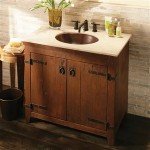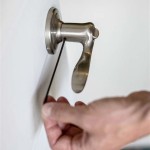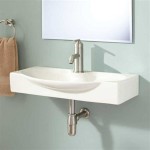How Much Does Installing a Bathroom Cost?
Renovating or installing a new bathroom is a significant home improvement project that can dramatically increase a property's value and improve daily living. Before embarking on this project, it is crucial to understand the potential costs involved. The price of installing a bathroom can vary widely depending on several factors, including the size of the bathroom, the quality of materials used, the complexity of the plumbing and electrical work required, and the geographic location.
Broadly, the cost of installing a bathroom can range from a few thousand dollars for a basic, budget-friendly update to tens of thousands of dollars for a high-end, custom-designed space. This article will delve into the various cost components, providing a comprehensive overview to help homeowners estimate the potential expenses associated with their bathroom installation project.
Key Factors Influencing Bathroom Installation Costs
Several primary factors significantly impact the overall cost of a bathroom installation. Understanding these elements is essential for creating a realistic budget and managing expectations throughout the project.
Size and Layout
The physical size of the bathroom is a fundamental cost driver. Larger bathrooms generally require more materials, such as tiles, drywall, and paint, thus increasing the overall expense. Similarly, the layout of the bathroom can influence the cost. A simple, functional layout is typically less expensive than a complex design involving custom cabinetry, intricate tile patterns, or the relocation of plumbing fixtures.
For instance, a small powder room installation, which typically involves a toilet and sink, will generally cost less than a full bathroom installation with a shower, bathtub, and vanity. Altering the existing layout to accommodate design changes, such as moving a toilet or shower, can also add substantial costs due to plumbing and structural modifications.
Materials and Fixtures
The choice of materials and fixtures significantly influences the overall cost. Budget-friendly options, such as standard ceramic tiles, basic vanities, and builder-grade faucets, will result in lower expenses. Conversely, high-end materials, such as natural stone tiles, custom-built vanities, designer fixtures, and smart technology components, will drastically increase the cost.
The quality and brand of fixtures also plays a crucial role. For example, a basic acrylic bathtub might cost a few hundred dollars, whereas a cast iron soaking tub from a luxury brand could cost several thousand dollars. Similarly, the type of countertop material chosen for the vanity can impact the price. Laminate countertops are generally the most affordable option, while solid surface materials like granite, quartz, or marble are significantly more expensive.
Plumbing and Electrical Work
Plumbing and electrical work are critical components of bathroom installation and can represent a significant portion of the overall cost. The complexity of the plumbing and electrical systems required will depend on the existing infrastructure and the desired layout of the new bathroom. If the installation involves relocating plumbing fixtures, such as the toilet, sink, or shower, it will necessitate re-routing water supply lines and drainpipes, which can be a labor-intensive and costly undertaking.
Similarly, any electrical work, such as installing new outlets, lighting fixtures, or ventilation fans, must be performed by a qualified electrician to ensure compliance with building codes and safety regulations. Older homes may require upgrades to the electrical system to accommodate the increased power demands of modern bathroom appliances. The cost of plumbing and electrical work can vary depending on the extent of the work required and the hourly rates charged by plumbers and electricians in the area.
Detailed Breakdown of Bathroom Installation Costs
To gain a more precise understanding of the costs involved, it's helpful to examine a detailed breakdown of each component of the installation process.
Demolition and Removal
If the project involves renovating an existing bathroom, the first step is often demolition and removal of old fixtures, tiles, and flooring. The cost of demolition can range from a few hundred dollars to several thousand dollars, depending on the size of the bathroom and the extent of the demolition required. Factors that influence the cost include the type of materials being removed, the ease of access to the bathroom, and the disposal fees for debris.
For example, removing old tile flooring can be a time-consuming and labor-intensive task, requiring specialized tools and techniques. Asbestos abatement, if present in older homes, can significantly increase demolition costs due to the need for professional removal by certified contractors.
Framing and Drywall
After demolition, the next step may involve framing and drywall installation. Framing involves constructing the structural framework for walls, ceilings, and partitions. The cost of framing depends on the size of the bathroom and the complexity of the design. Drywall is then installed to create smooth, paintable surfaces. The cost of drywall installation includes the materials and labor required to hang, tape, and sand the drywall seams.
If the project involves altering the layout of the bathroom, it may require building new walls or partitions, which will increase the framing and drywall costs. The quality of the drywall and the level of finishing also impact the overall cost. For example, moisture-resistant drywall is often used in bathrooms to prevent mold and mildew growth.
Plumbing Installation
Plumbing installation is a critical component of bathroom installation. It involves connecting water supply lines and drainpipes to the toilet, sink, shower, and bathtub. The cost of plumbing installation depends on the complexity of the plumbing system and the number of fixtures being installed.
The cost can be affected by the condition of existing plumbing infrastructure. Older homes might need pipe replacement due to corrosion or outdated materials, adding to the expense. The type of piping used, such as copper, PEX, or PVC, also influences the cost. Copper pipes are generally more expensive than PEX or PVC, but they can withstand higher water pressure and temperature.
Electrical Installation
Electrical installation includes wiring for lighting fixtures, outlets, ventilation fans, and any other electrical appliances in the bathroom. All electrical work must be performed by a licensed electrician to ensure compliance with building codes and safety regulations. The cost of electrical installation depends on the number of electrical fixtures being installed and the complexity of the wiring system.
The cost can also be affected by the age of the electrical system. Older homes may require upgrades to the electrical panel to accommodate the increased power demands of modern bathroom appliances. The type of lighting fixtures chosen, such as recessed lighting, vanity lighting, or accent lighting, also impacts the cost.
Flooring Installation
Flooring installation involves installing the chosen flooring material, such as tile, vinyl, or laminate. The cost of flooring installation depends on the type of flooring material, the size of the bathroom, and the complexity of the installation. Tile is a popular choice for bathrooms due to its durability and water resistance, but it can be more expensive to install than vinyl or laminate.
The cost of tile installation can vary depending on the size and shape of the tiles, the complexity of the pattern, and the type of grout used. Natural stone tiles, such as marble or granite, are generally more expensive to install than ceramic or porcelain tiles. Vinyl flooring is a more affordable option, but it may not be as durable or aesthetically pleasing as tile.
Fixture Installation
Fixture installation includes installing the toilet, sink, shower, bathtub, vanity, and any other bathroom fixtures. The cost depends on the type and quality of the fixtures chosen and the complexity of the installation.
The cost can also be influenced by the plumber fees. Installing a high-end toilet with advanced features, such as a bidet or heated seat, may require specialized knowledge and skills, which can increase installation costs. Similarly, installing a custom-built vanity may require modifications to the plumbing and electrical systems, which can also add to the overall expense.
Painting and Finishing
Painting and finishing involve painting the walls and ceiling, installing trim and molding, and applying any other finishing touches. The cost of painting and finishing depends on the size of the bathroom, the type of paint used, and the complexity of the finishing details.
The cost can also be affected by the condition of the walls. If the walls are damaged or uneven, they may require patching and sanding before painting, which will add to the overall expense. Using high-quality paint that is specifically designed for bathrooms can help prevent mold and mildew growth.
Additional Costs to Consider
In addition to the core components outlined above, there are several other potential costs to consider when budgeting for a bathroom installation.
Permits and Inspections
Depending on the scope of the project and local building codes, it may be necessary to obtain permits and inspections from the local municipality. Permit fees can vary depending on the type of work being performed and the location of the property. Inspections are typically required to ensure that the work is being performed in compliance with building codes and safety regulations.
Failing to obtain the necessary permits can result in fines and delays, so it's essential to check with the local building department before starting the project.
Contingency Fund
It's always a good idea to set aside a contingency fund to cover unexpected costs that may arise during the installation process. Unforeseen issues, such as hidden plumbing or electrical problems, structural damage, or material delays, can quickly add to the overall cost.
A contingency fund of 10-20% of the total project cost is generally recommended.
Labor Costs
Labor costs are a significant component of bathroom installation. The hourly rates charged by plumbers, electricians, carpenters, tile installers, and other contractors can vary depending on their experience, skill level, and location. Obtaining multiple quotes from different contractors is recommended to ensure you are getting a fair price.
The total labor costs will depend on the complexity of the installation and the number of hours required to complete the project.
In conclusion, the cost of installing a bathroom is subject to a number of interdependent variables. Careful planning, detailed budgeting, and thorough research are essential steps for a successful and cost-effective installation.

How Much Does A New Bathroom Cost In 2024 Victoriaplum Com

Cost To Add A Bathroom 2024 Guide Forbes Home

How Much Does It Cost To Add A Bathroom 2024 Data

How Much Does A New Bathroom Cost In 2024 Victoriaplum Com

How Much Does It Cost To Fit A New Bathroom Ideas

Shower Door Installation Cost Comparison Diy Vs Professional

Bathroom Vanity Installation Cost 2024 Average S

How Much Does A New Bathroom Cost In 2024 Checkatrade

What S The Average Cost To Add A Bathroom Neighborly

How Much Does A Bathroom Remodel Cost 2024 Data Angi
Related Posts







